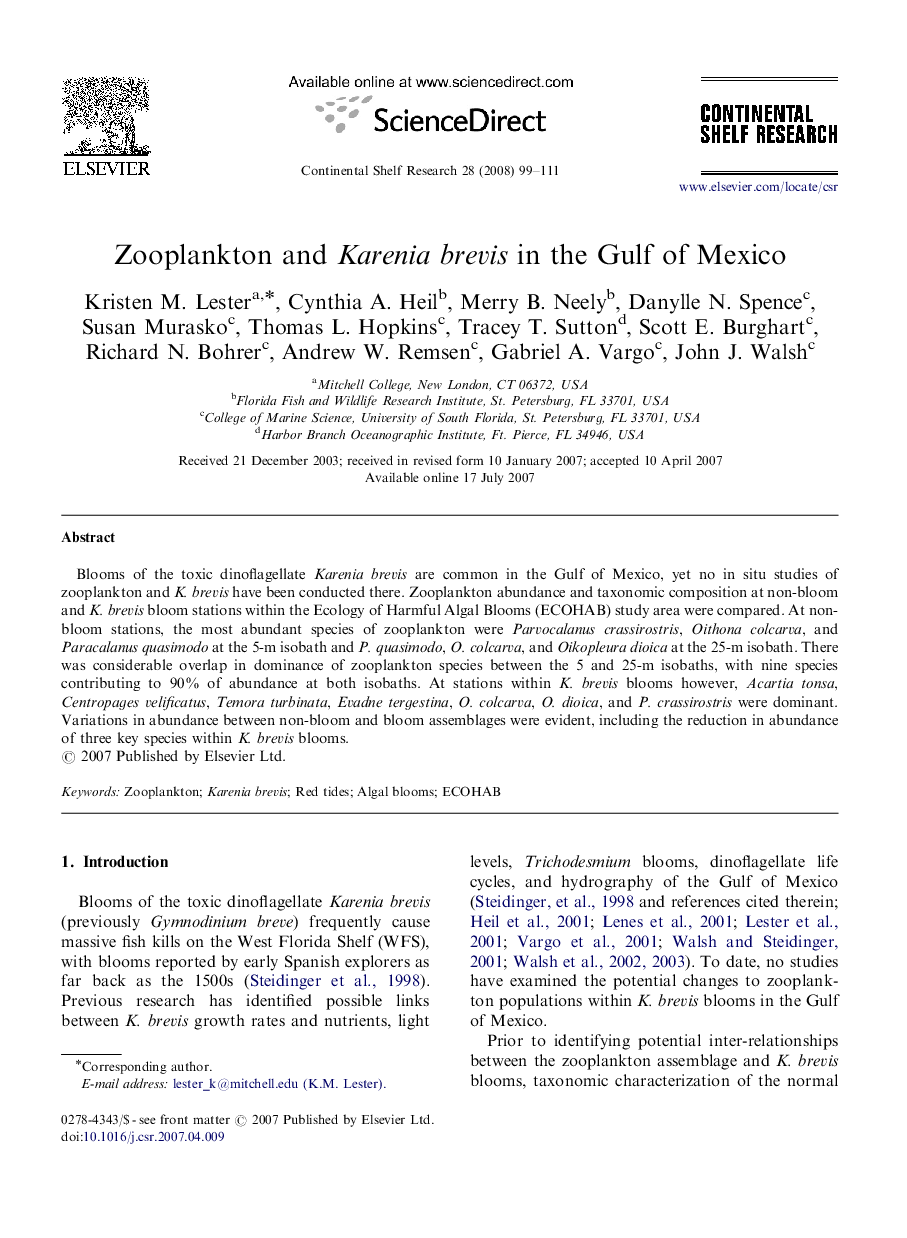| Article ID | Journal | Published Year | Pages | File Type |
|---|---|---|---|---|
| 4533353 | Continental Shelf Research | 2008 | 13 Pages |
Blooms of the toxic dinoflagellate Karenia brevis are common in the Gulf of Mexico, yet no in situ studies of zooplankton and K. brevis have been conducted there. Zooplankton abundance and taxonomic composition at non-bloom and K. brevis bloom stations within the Ecology of Harmful Algal Blooms (ECOHAB) study area were compared. At non-bloom stations, the most abundant species of zooplankton were Parvocalanus crassirostris, Oithona colcarva, and Paracalanus quasimodo at the 5-m isobath and P. quasimodo, O. colcarva, and Oikopleura dioica at the 25-m isobath. There was considerable overlap in dominance of zooplankton species between the 5 and 25-m isobaths, with nine species contributing to 90% of abundance at both isobaths. At stations within K. brevis blooms however, Acartia tonsa, Centropages velificatus, Temora turbinata, Evadne tergestina, O. colcarva, O. dioica, and P. crassirostris were dominant. Variations in abundance between non-bloom and bloom assemblages were evident, including the reduction in abundance of three key species within K. brevis blooms.
